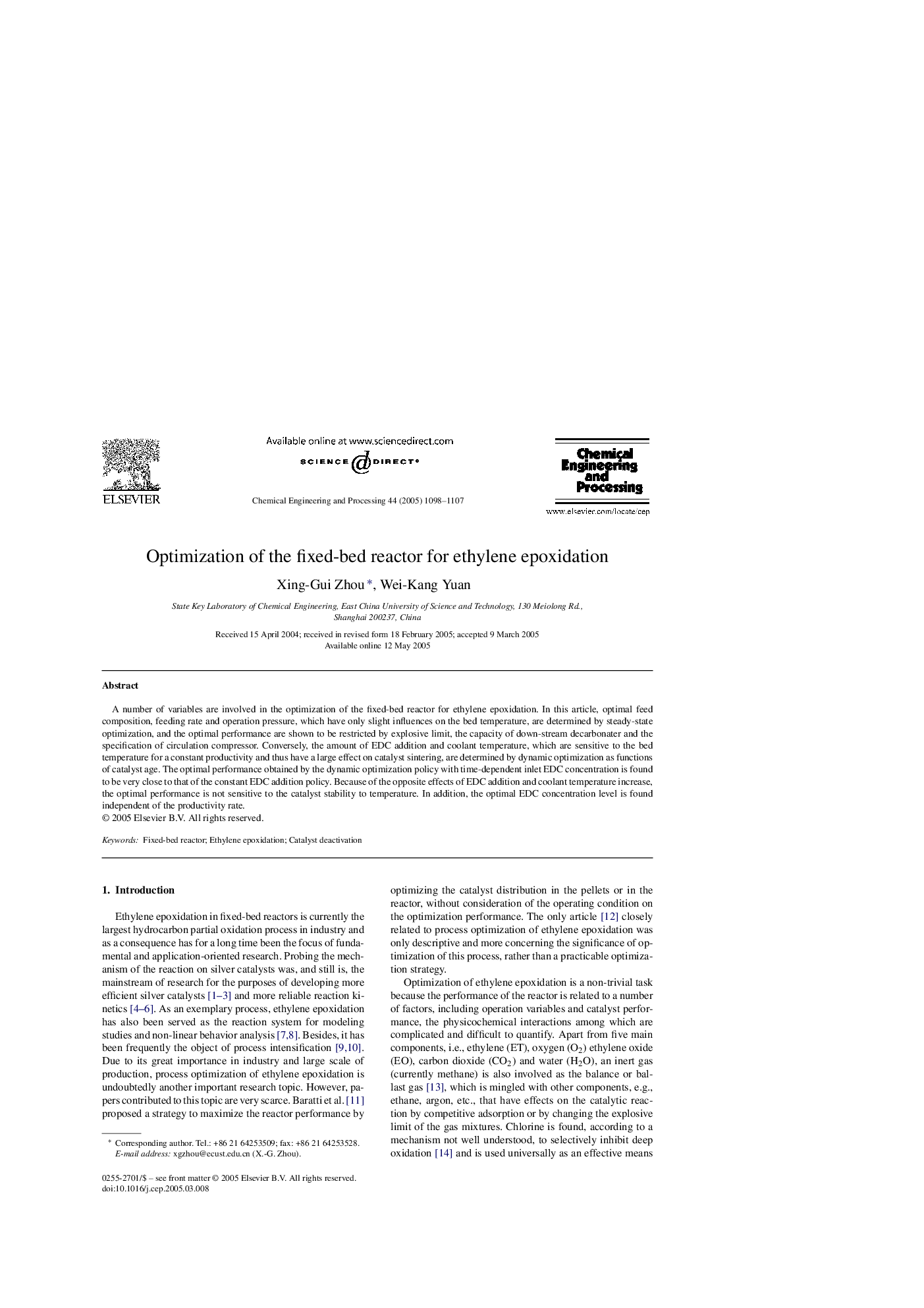| Article ID | Journal | Published Year | Pages | File Type |
|---|---|---|---|---|
| 10397329 | Chemical Engineering and Processing: Process Intensification | 2005 | 10 Pages |
Abstract
A number of variables are involved in the optimization of the fixed-bed reactor for ethylene epoxidation. In this article, optimal feed composition, feeding rate and operation pressure, which have only slight influences on the bed temperature, are determined by steady-state optimization, and the optimal performance are shown to be restricted by explosive limit, the capacity of down-stream decarbonater and the specification of circulation compressor. Conversely, the amount of EDC addition and coolant temperature, which are sensitive to the bed temperature for a constant productivity and thus have a large effect on catalyst sintering, are determined by dynamic optimization as functions of catalyst age. The optimal performance obtained by the dynamic optimization policy with time-dependent inlet EDC concentration is found to be very close to that of the constant EDC addition policy. Because of the opposite effects of EDC addition and coolant temperature increase, the optimal performance is not sensitive to the catalyst stability to temperature. In addition, the optimal EDC concentration level is found independent of the productivity rate.
Related Topics
Physical Sciences and Engineering
Chemical Engineering
Process Chemistry and Technology
Authors
Xing-Gui Zhou, Wei-Kang Yuan,
